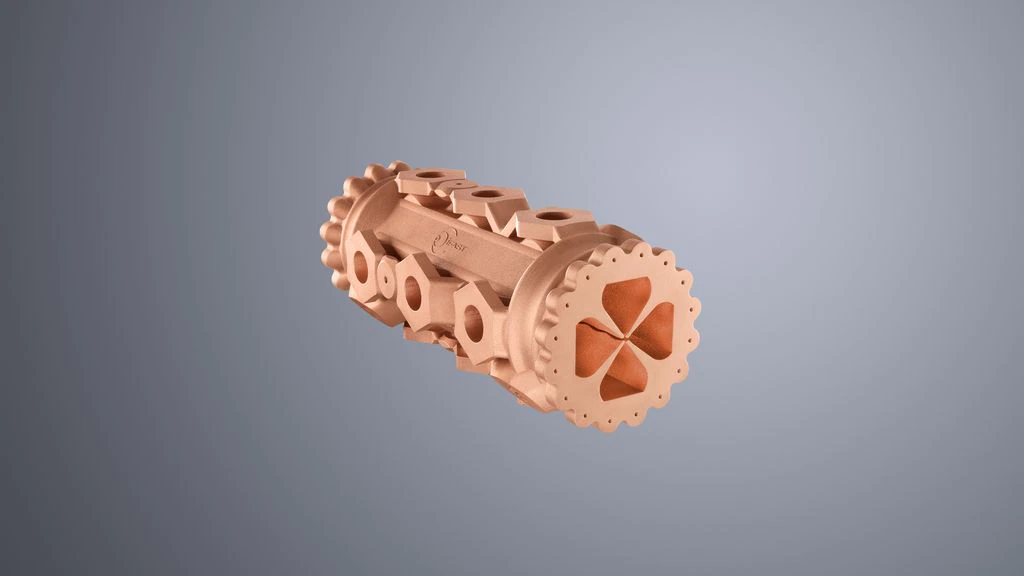DITZINGEN, Germany, Nov. 25, 2022 — TRUMPF has additively manufactured a core component of future particle accelerators as part of the EU-funded I.FAST (Innovation Fostering in Accelerator Science and Technology) project coordinated by the European Organization for Nuclear Research (CERN). According to the company, TRUMPF’s breakthrough stems from its ability to print the component in one piece, reportedly for the first time.
Michael Thielmann, additive manufacturing expert at TRUMPF, said, “This is proof that large copper components with a component height of nearly 400 mm can be manufactured additively with sufficient precision using our machines — or in other words, with 3D printing, we can manufacture even high-precision parts like this faster, cheaper, and more energy-efficiently.”

The radio frequency quadrupole (RFQ) is one of the most complex parts of any accelerator complex. Courtesy of TRUMPF.
The manufactured part is a radio frequency quadrupole (RFQ). The RFQ provides energy to the beam of particles, bringing it ever closer to the speed of light.
Up to this point, suppliers have manufactured RFQs for scientific laboratories such as CERN and for industry at large using conventional methods, which require individual production steps such as milling and brazing and are time-consuming and costly. In contrast, additive manufacturing eliminates many of the intermediate steps. For example, the TRUMPF system can build around empty spaces such as cooling channels when printing the RFQ.
I.FAST experts from multiple institutions across Europe designed the complex component specifically for TRUMPF’s TruPrint 5000 green laser. The project looks to allow Europe to develop and enhance leadership in particle accelerators for science and society. Among other things, the focus is on 3D metal printing.
“Over 30,000 accelerators are currently in use worldwide, the large majority of which is used for health care and industry,” said Marizio Vretenar from CERN, project coordinator of I.FAST. “Additive manufacturing can help reduce the size and cost of all accelerators types, by improving and shortening their fabrication and enhancing their performance.”
In the additive manufacturing process using TRUMPF’s green laser, the copper absorbed the green laser beam better than that of an infrared laser, making it easier to process, according to Thielmann.
“We need less energy to be as fast as an infrared laser, or we can work faster with the same energy,” Thielmann said.
As a result, users can additively manufacture copper components more cheaply with the green laser.